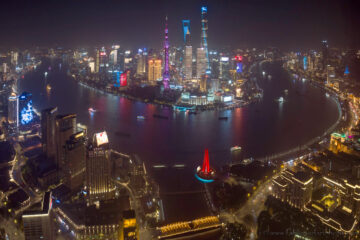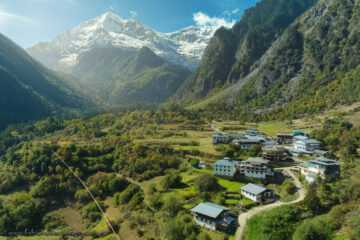In this Travel Guide, you’ll find useful tips to organize your trip in Dunhuang and surroundings, along the ancient Silk Road.
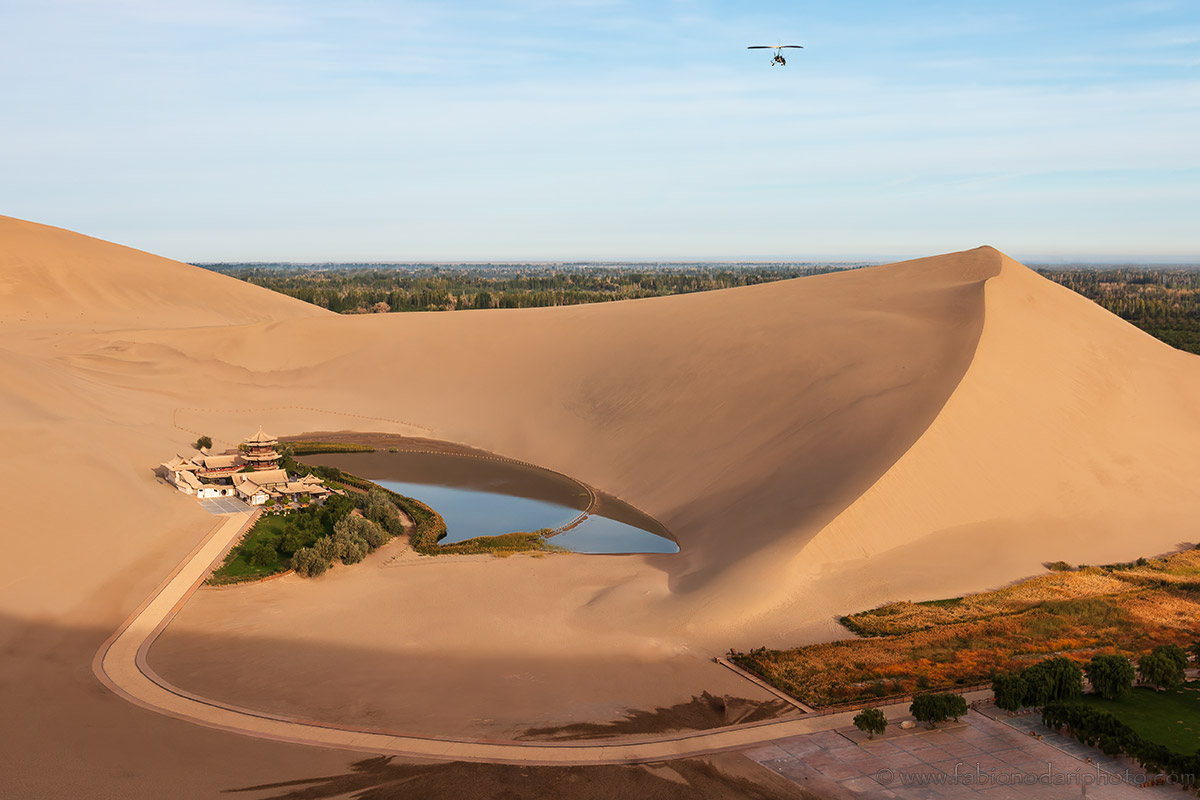
Nestled in the remote and arid expanses of Gansu Province, Dunhuang holds a place of immense historical and cultural significance in the heart of China. This ancient oasis city, often referred to as the “Pearl on the Silk Road”, has a history that stretches back over two millennia, making it a vital crossroads for trade, culture, and religion.
Dunhuang’s historical importance is deeply intertwined with the famed Silk Road, the ancient network of trade routes that connected the East to the West. The city bore witness to the exchange of goods, ideas, and beliefs between East and West.
Today hordes of Chinese tourists swarm this remote place but you can still see why the area has been so important for such a long time. In this Travel Guide, you will find useful info to help you arrange your trip to Dunhuang and surroundings. Here you can find my travel guide to another amazing place in Gansu: the Rainbow Mountains of Zhangye Danxia and here my China DIY Travel Guide.
Best Time to Visit

Since it’s located in the desert, Dunhuang experiences extreme weather conditions, making the timing of the visit very important. The best time to explore this area is during Spring or early Autumn.
The months between April and June offer pleasant weather with mild temperatures, making it an ideal time to visit the province. The months of September and October are also ideal since the weather is still favorable, and the tourist crowds have reduced by early autumn. Just remember to avoid at all costs the first week of October since it’s a national holiday.
Where to Stay and for how long

Dunhuang is a good starting point to explore the surrounding areas. I stayed at the Huaxia Hotel which is located right before the scenic Crescent Moon Oasias area. It’s a 5-star hotel but with Chinese characteristics, which means that it’s actually between 3 and 4 stars by international standards. The rooms are quite comfortable though.
The duration of your stay in Dunhuang will depend on the number of attractions you want to explore. Typically, a 2-3 day stay is sufficient to cover the city’s highlights and the surrounding areas.
How to get to Dunhuang
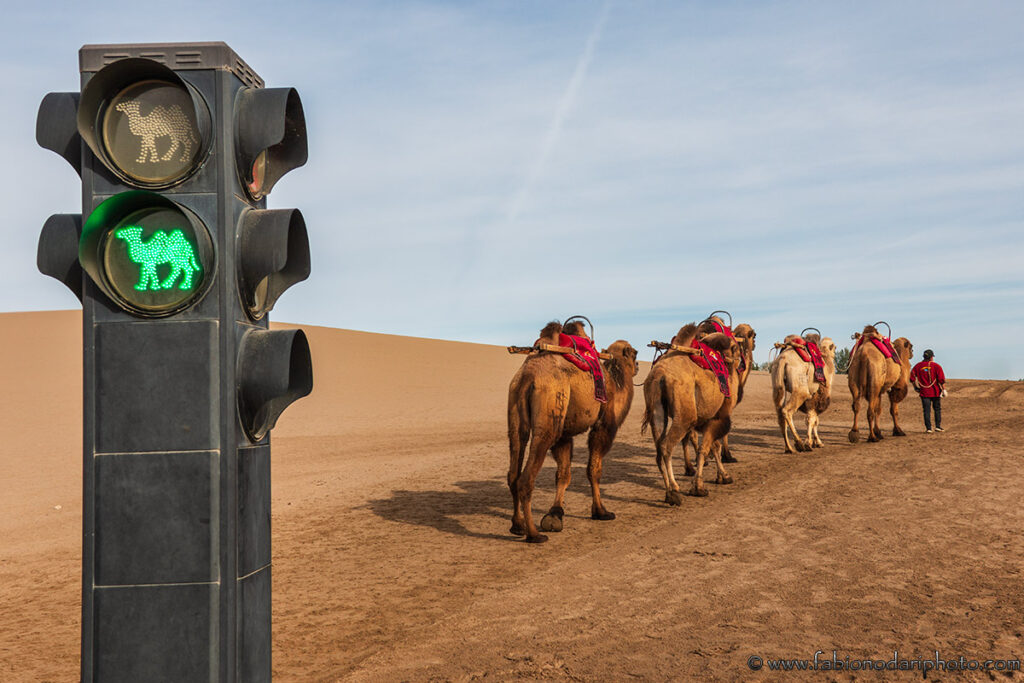
Dunhuang is relatively isolated, but there are several ways to reach this city:
- By Air: The Dunhuang Airport (DNH) has domestic flights connecting it to major cities like Beijing, Xi’an, and Lanzhou. Check the flight on Trip.com.
- By Train: Dunhuang Railway Station is well-connected to cities like Lanzhou, Xi’an, and Jiayuguan by both high-speed and regular trains. The train journey offers stunning views of the Gobi Desert and surrounding landscapes. You can book your train ticket using Trip.com.
- By Bus: Dunhuang has long-distance bus connections to various cities in Gansu Province and neighboring regions. I don’t recommend this option because it’s time-consuming and foreigners have often trouble booking bus tickets in advance
How to explore Dunhuang
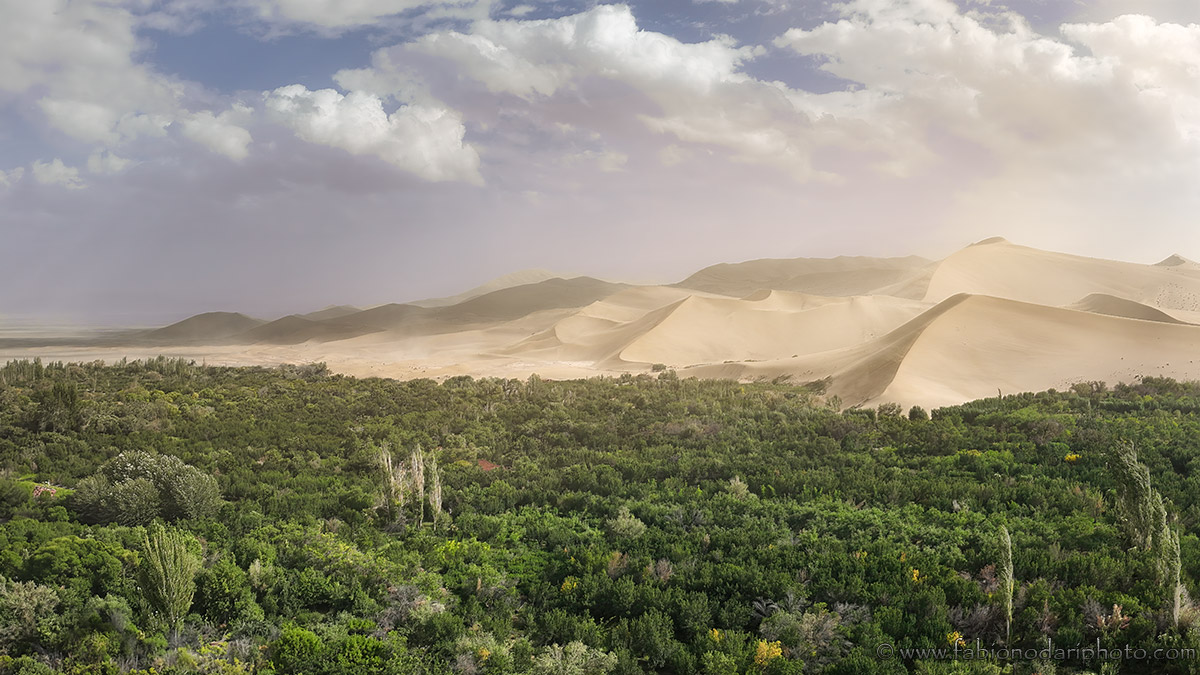
Dunhuang is a treasure trove of historical and natural wonders. Here’s how to explore the city considering 3 nights there and 2 full days visiting the most interesting places.
Day one: Mingsha Shan (Singing Sand Dunes) 鸣沙山月牙泉景区
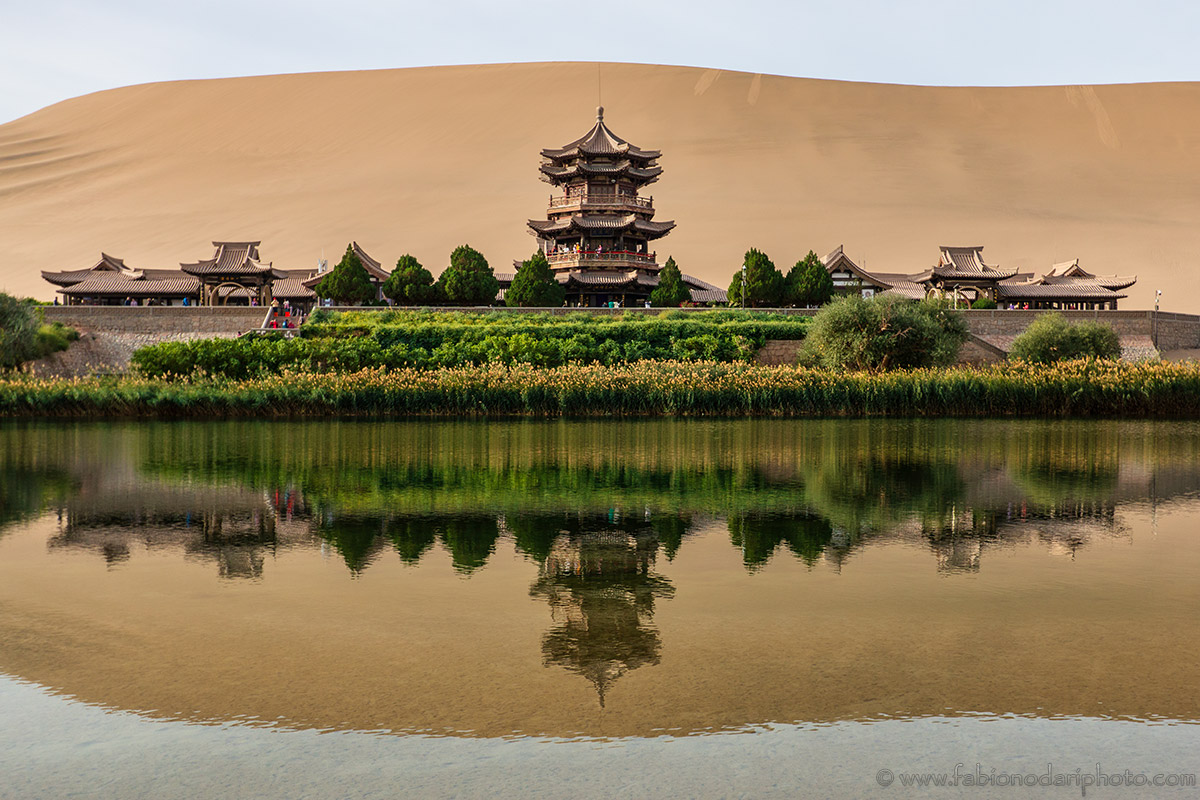
This is one of the most iconic places in the Gobi desert. The small pond located between gigantic dunes is a classic photographic spot for all those visiting the ancient Silk Road route. There are different activities you can do like sand sliding, camel riding (not recommended due to the way camels are treated), paragliding, or even a helicopter ride.
Don’t forget to hike the huge sand dune (impossible to miss since you’ll see a lot of Chinese doing the same), for a better view of the oasis.
Unfortunately, here drones are not allowed.
Mogao Caves 莫高窟景区
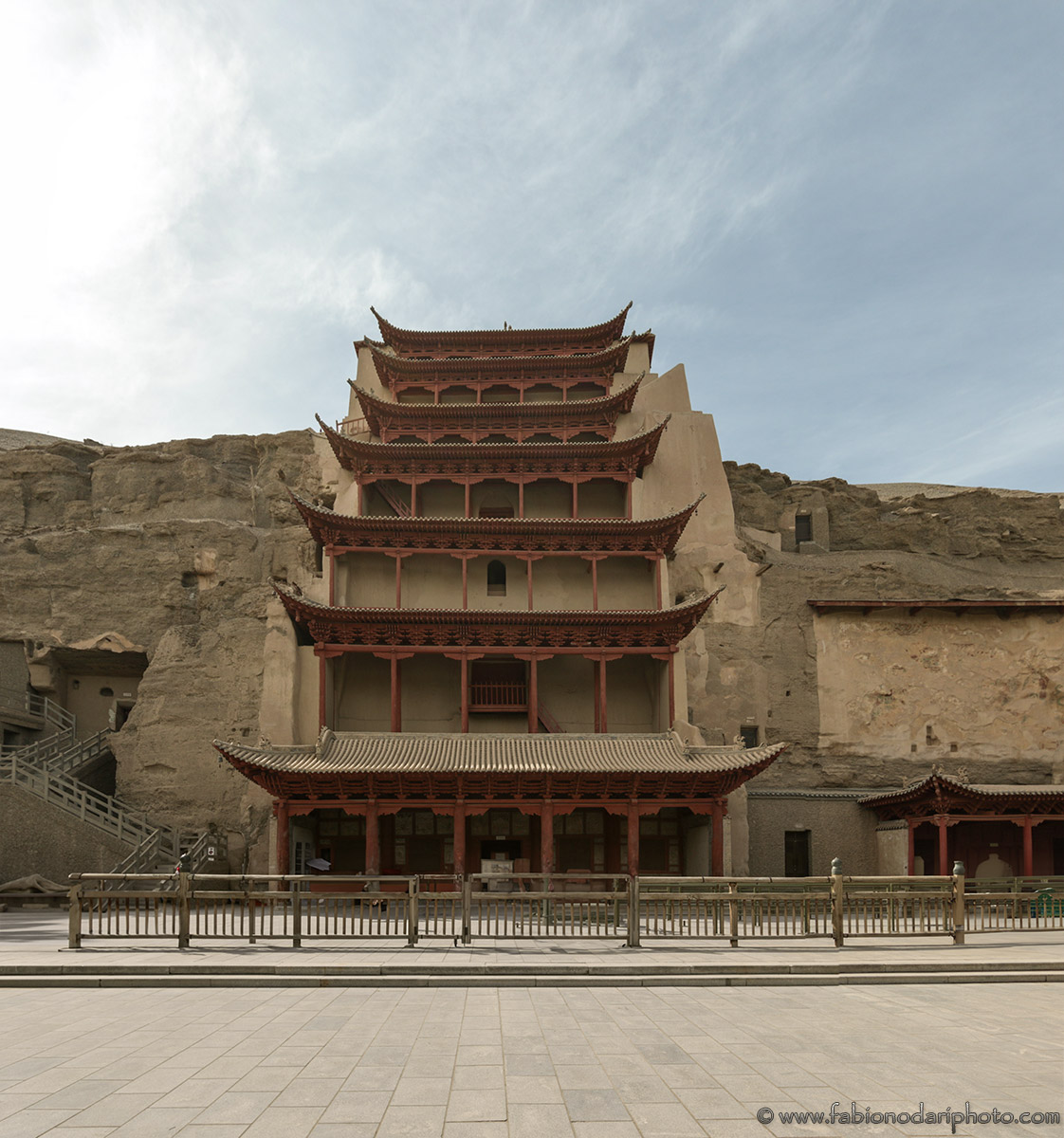
The Mogao Caves, also known as the Thousand Buddha Grottoes, are a UNESCO World Heritage site.
These caves have a history that spans over a millennium. The first cave was carved into the cliffside during the fourth century, and over time, hundreds of caves were created, housing a magnificent collection of Buddhist sculptures, frescoes, manuscripts, and relics.
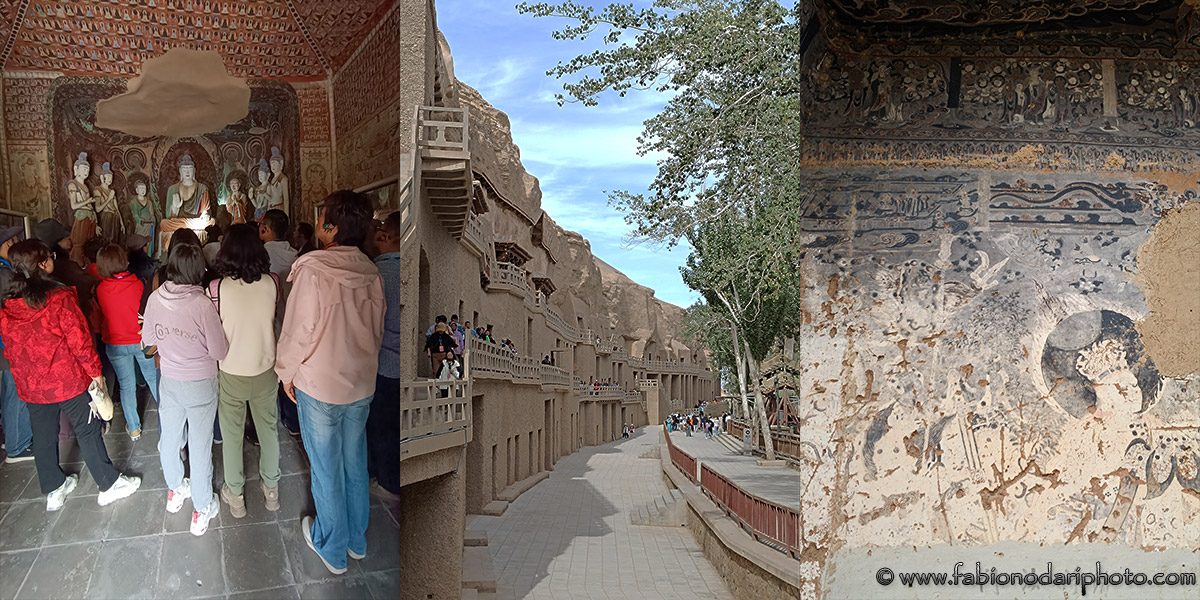
The Mogao Caves are famous for their number and for the artistic and historical significance of their contents. You can witness the evolution of Buddhist art and iconography across different dynasties and eras, from early Buddhist symbolism to the flourishing of the Tang Dynasty’s artistic renaissance.
The site provides a vivid panorama of Buddhist teachings and religious practices, showcasing the fusion of diverse cultural influences, from Indian and Central Asian to Chinese and Tibetan.
These caves have played a crucial role in preserving the cultural exchanges along the Silk Road, making them an invaluable historical and cultural resource and they are often referred to as the “Sistine Chapel of the East.”
Ancient Sound of Dunhuang (theater show) 樂動敦煌
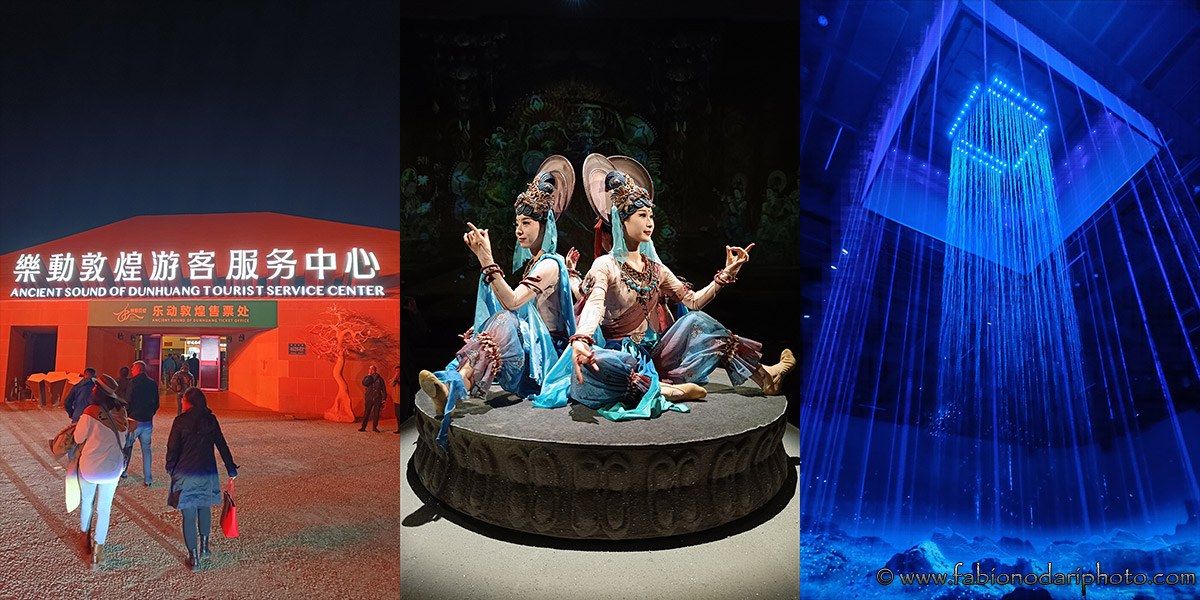
I’m often reluctant to attend shows in China, but I have to be honest: The Ancient Sound of Dunhuang is absolutely amazing. It’s a mix of performances by local artists, light shows, and classic Chinese comedy sketches. It lasts about a couple of hours and you won’t regret it.
To be sure not to miss it, ask your hotel for the time and to help you book the tickets.
Dunhuang Museum and Night Market
The Dunhuang Museum is a good place to learn about the history and culture of the region, with a focus on the Silk Road and its impact on Dunhuang. Unfortunately, most of the artifacts don’t have a label in English, as it often happens in similar museums all around the country
Dunhuang also has a vibrant night market. Don’t miss trying the famous Dunhuang noodles and local snacks. The whole area is famous for its delicious raisins and dried fruits, some of the best in the whole of China.
Day Two: Yangguan Pass 阳关景区
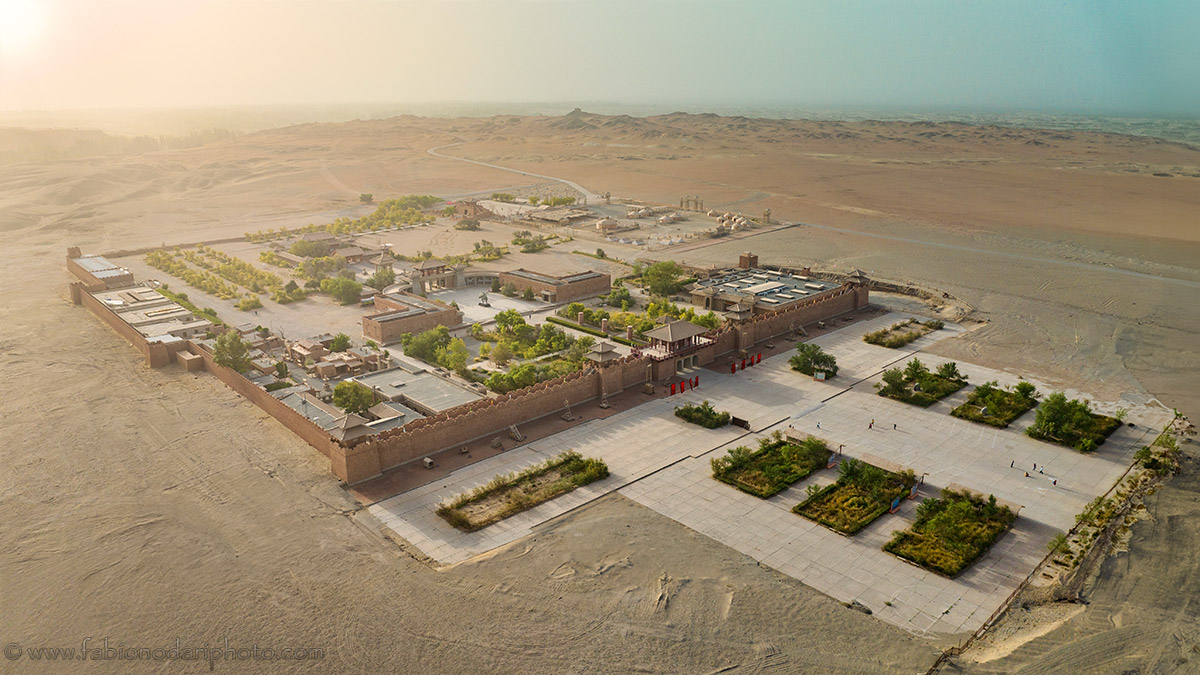
On the second day, you’ll need to hire a local driver to take you deep in the desert and explore some of the historical places of the area.
The first one is the Yangguan Scenic Spot. Nestled along the ancient Silk Road, Yangguan holds a unique place in history as one of the most vital checkpoints along this legendary trade route. It served as a western frontier outpost during various dynasties, acting as a sentinel and resting point for travelers. The significance of Yangguan is immortalized in classical Chinese poetry, most notably in Wang Wei’s “Leaving the South Gate at Yangguan,” a renowned Tang Dynasty work that beautifully captures the melancholy of travelers departing on long, uncertain journeys.
Today the site features the reconstructed Yangguan Pass, complete with its imposing fortress walls, watchtowers, and a visitor center that provides detailed insights into the area’s history.
What’s most impressive, I’m my opinion, is the huge vineyard that grows right in the desert.
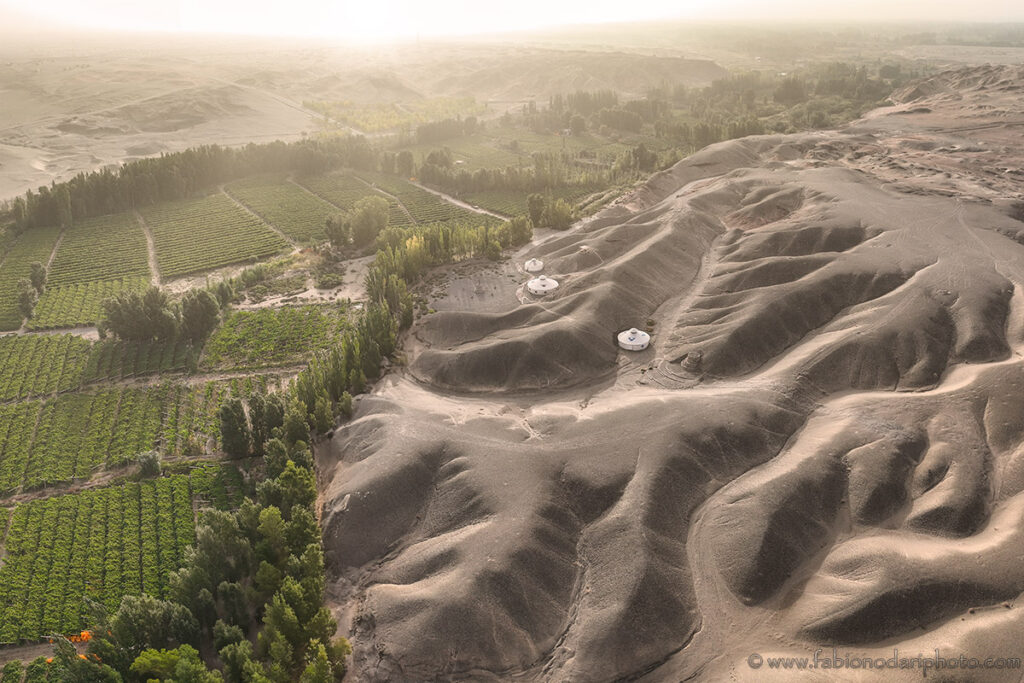
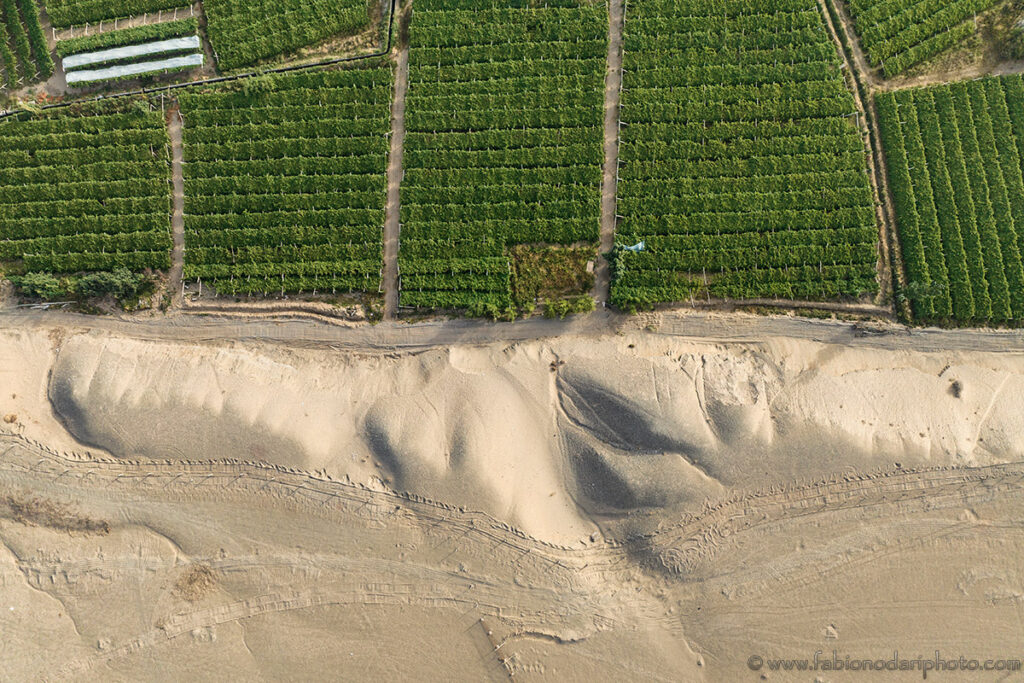
There is a small village right along the vineyard and is a good place to have lunch and enjoy some local grapes. Also in this area, drones are technically not allowed but no one really cares.
Yumen Pass 玉门关景区
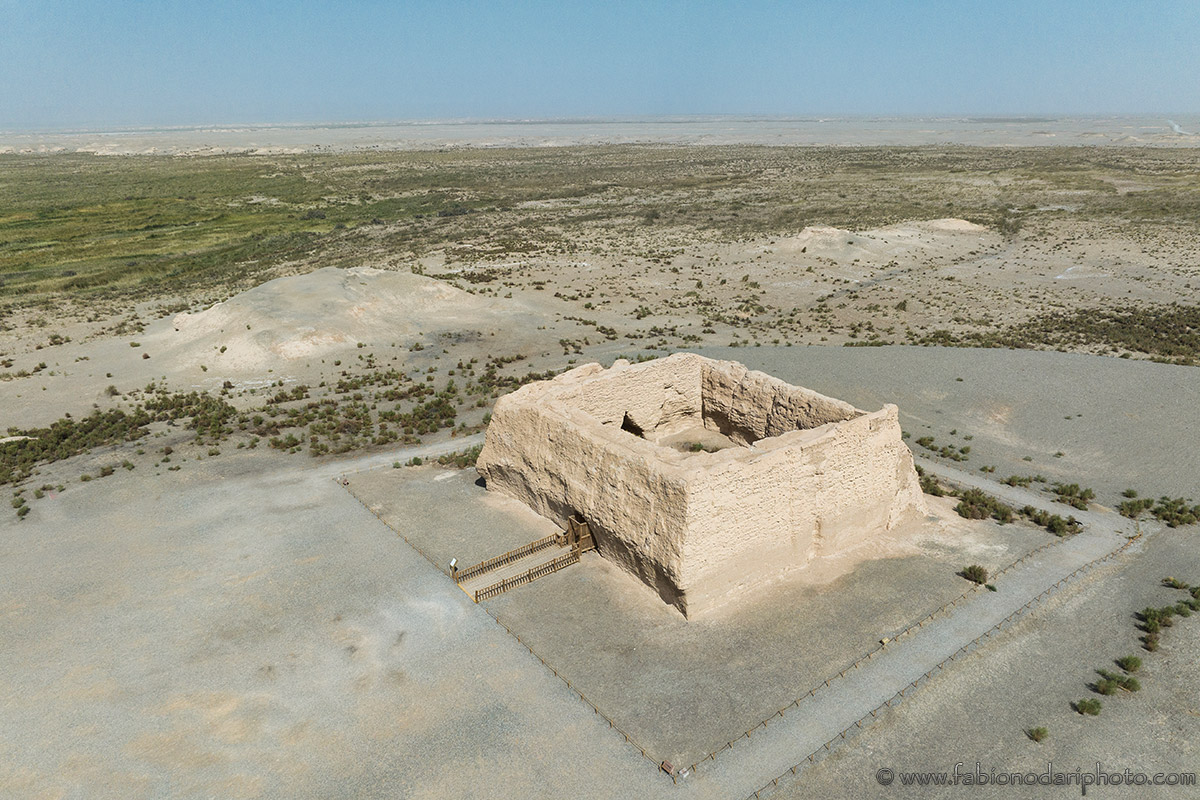
The next destination is Yumen Pass which was an ancient fortress on the Silk Road that played a significant role in ancient trade and cultural exchange.
Its name, “Yumen,” translates to “Jade Gate,” an appellation derived from the ancient belief that this site was as precious and essential as the finest gem. Yumen Pass served as a vital gateway and defensive outpost on the northern route of the Silk Road, a critical link that connected the heart of China to the Central Asian regions and, ultimately, the Western world.
This fortified stronghold was established during the Han Dynasty (202 BCE – 220 CE) to safeguard the lucrative Silk Road trade routes from nomadic invasions.
Dunhuang Yadan Global Geopark 敦煌雅丹世界地质公园
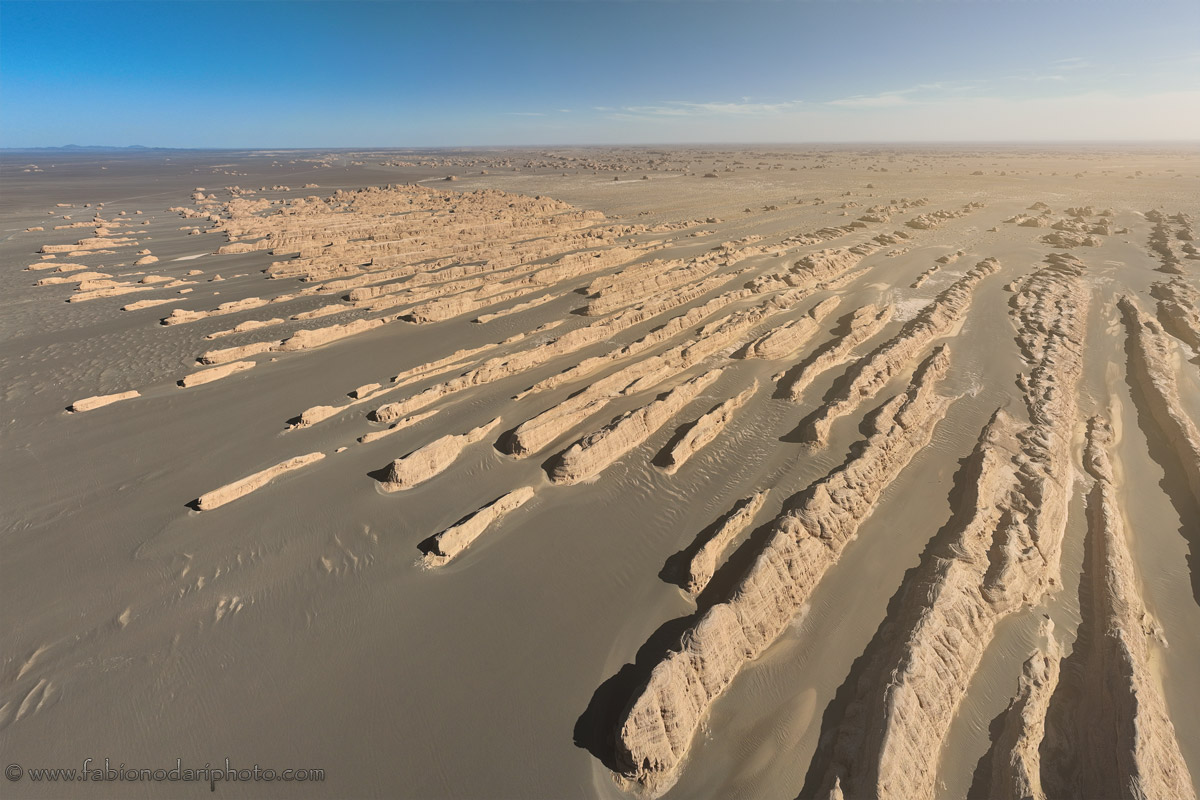
Often forgotten by those who visit Gansu, this spectacular area is well worth the detour. It’s located a few kilometers from the border of the Xinjiang Autonomous Region and the road itself to get to this place is absolutely amazing.
Yadan, which means “steep hill” in Uighur, perfectly describes the park’s prominent features: towering, wind-carved sandstone formations that have taken on incredible shapes over millions of years. The forces of nature have created a landscape that resembles something out of a science fiction novel.
The silence of the desert is a stark contrast with the notice of the tourist places nearby Dunhuang. Definitely recommended!
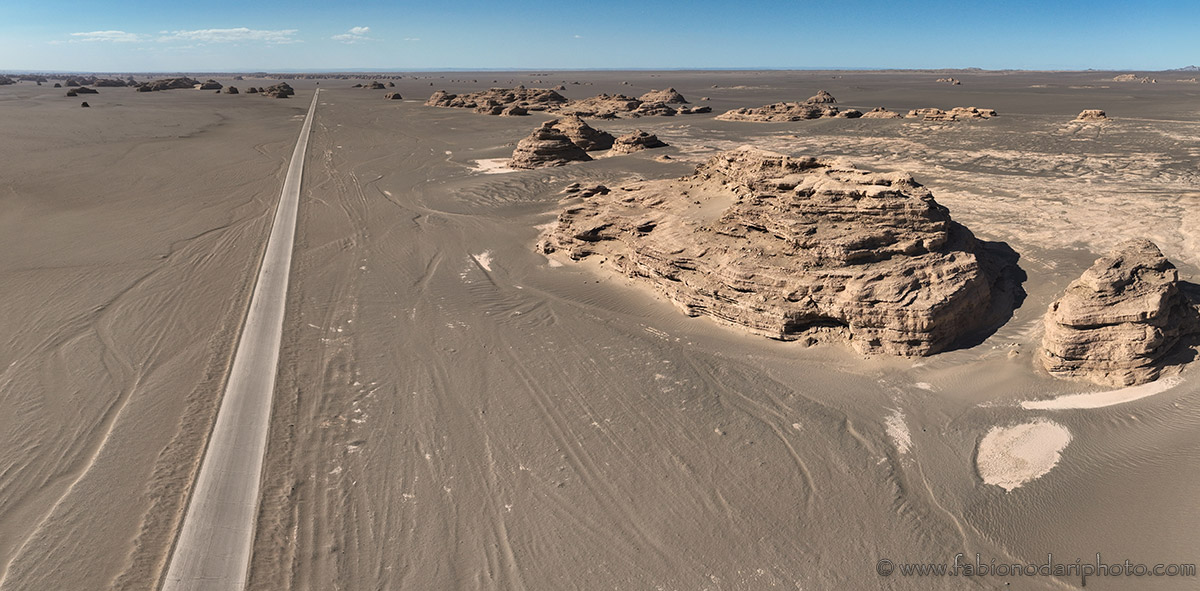
Before heading into this area be sure to double-check with your hotel if foreigners are allowed to pass the checkpoint to enter the desert. There are a few not-so-secret military bases and often there are restrictions for non-Chinese citizens.
Drones are not allowed due to the presence of several military installations. I didn’t know and flew mine anyway.
If you are planning a trip to China remember that you’d need a VPN to access the internet and popular ones like ExpressVPN and NordVPN DO NOT WORK. At the moment this one is working properly.
Here you can find my quick guide to another incredible place: Furong Ancient Town. Here are some more pictures I took in Gansu.
